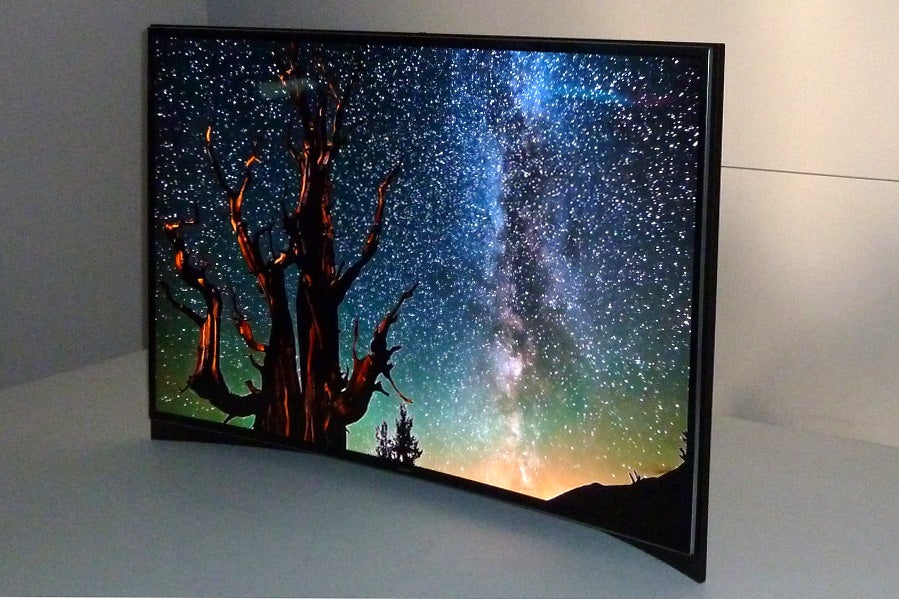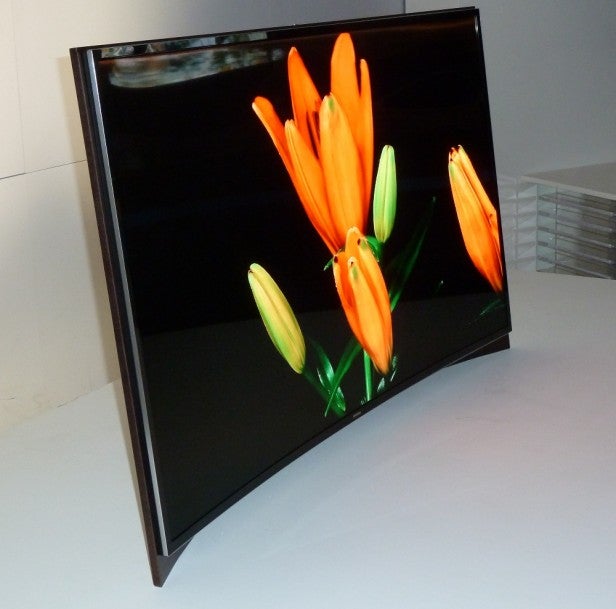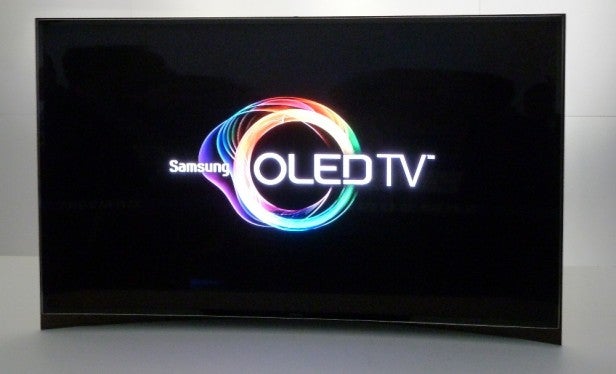Samsung 55in Curved OLED TV Review
Samsung 55in Curved OLED TV
Hands on: Is curved the new 4k? We take a look at Samsung's new curved TV.

Verdict
Introduction
As well as trying to change the TV landscape with 4k and OLED TVs, Samsung and LG were keen at CES 2013 to change the physical shape of TVs by unveiling curved OLED panel designs.
LG’s curved screen has a model name – the 55EA9800 – and is even supposed to launch before the end of 2013. Samsung’s model, on the other hand, isn’t currently on any sort of imminent release trajectory. But since we managed to bag some serious quality time with the Samsung model, it’s that one we’ve selected to focus on to find out what advantages – if any – curved OLED TVs might have to offer.
Samsung 55in Curved OLED TV – Design
First, the way the screen curves gently away from the viewer so that the centre of the image lies slightly further back than its edges instantly gives Samsung’s model (and LG’s too, actually) iconic design status. Especially as the curved rear is exceptionally slim in typical OLED style.
While its curved face made it one of the most talked about TV of this year’s CES, though, it does also raise some questions. Particularly open to debate is the issue of image geometry. For curving the image introduces the idea of a viewing ‘sweet spot’ that is the meeting point of the perpendicular lines traced out from the curved surface. While any flat TV also has an element of this the effect is exagerated here; after all, as soon as you sit outside of this sweet spot to the left of right, the curving can start to make the pictures edges look bendy and distorted. From extreme angles you’ll even find the nearest of the TV’s edges curving round so that it actually blocks off some of the image from view. Furthermore, if you’re too fair forward or back, the curve of the screen doesn’t match the angle of your view.
Our experience of Samsung’s curved OLED on the CES show floor also suggests that the curved screen can have interesting implications where onscreen reflections are concerned. From the sweet spot reflections are no big deal at all. But from an angle of more than 30 degrees or maybe even a touch less, connections not only become apparent, but look more noticeable because they seem distorted.
With all these potential issues, you’re probably wondering why Samsung has bothered with introducing a slight bend to its latest OLED effort (other than giving the brand a ‘headline grabber’ at the CES). But the advantages of the curved screen if you ARE in the sweet spot are striking – especially when you’re watching a really large screen.
Samsung 55in Curved OLED TV – Picture Quality
The first thing we noticed was how much more immersive the picture seemed to be, thanks to the way the curvature makes your brain perceive a greater sense of depth than normal, and also because the curving of the image increases the extent to which the picture appears to be within your peripheral as well as main vision. In other words, the curvature of the screen enables pictures to closer resemble the way you perceive the real world, so you can get more immersed in it.
The picture also seemed sharper from corner to corner – a result of the way the screen’s gentle curvature matches the natural curvature of your eyes and vision, rather than the edges being further away from your eyes than the image’s centre as happens with normal flat TVs.
Our final impression of Samsung’s unique new proposition is that – as with curved cinema screens, in fact – while curved TVs could deliver tangible benefits, they possibly need larger screen sizes than the 55in models on show at the CES to be truly effective. Also, on account of their need for a viewing sweet spot and likely preference for very large screen sizes, they seem likely to prove much more satisfying when placed within a dedicated home cinema room, with carefully arranged seating; we’re yet to be convinced that they’ll necessary become a hit for normal living rooms. Especially given that if they do really come to market, they’ll likely command a pretty hefty price premium.
How we test televisions
We test every TV we review thoroughly over an extended period of time. We use industry standard tests to compare features properly. We’ll always tell you what we find. We never, ever, accept money to review a product.

